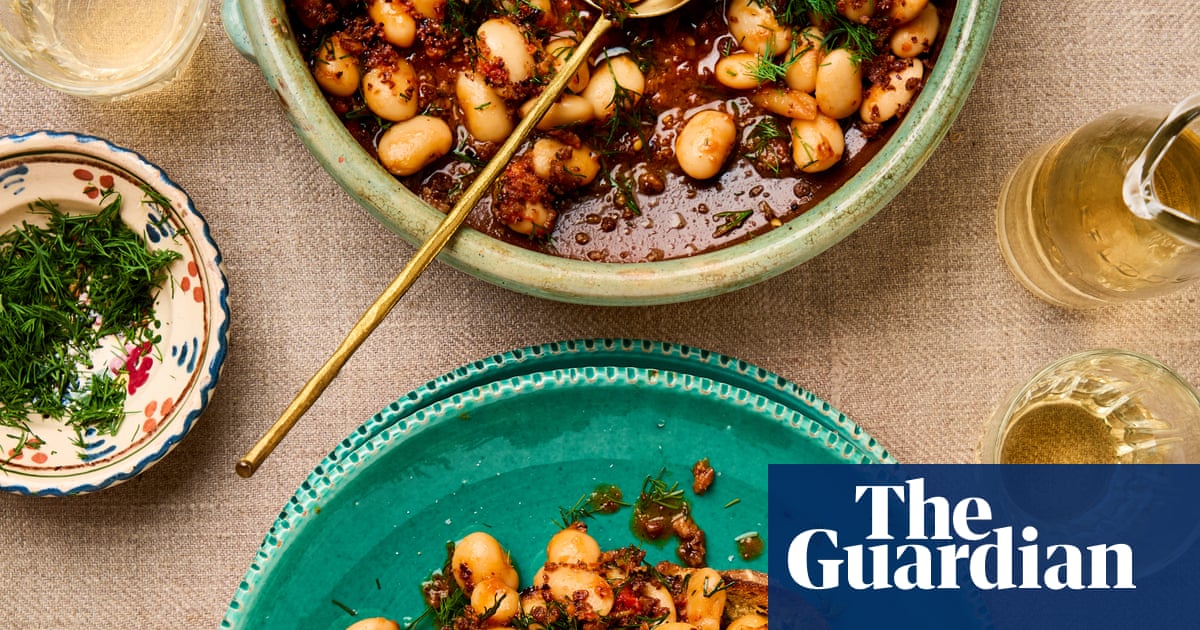My favourite breakfast is sliced tomatoes on rye bread sprinkled with sea salt. The best bit is neither the tomato flesh nor the bread, it’s the salted tomato water that runs down the back of my hands and threatens to meet my elbows. It’s liquid electricity and one of my favourite earthly flavours. It could make a great stock, or a delicious martini, perhaps even a marinade for ceviche, but here it’s thrown in at the end to refresh a dish of gently cooked tomatoes, beans and dill. Perfect for dunking anything but elbows into.
Ideally, you’ll need a food processor or blender for the pangrattato; if you don’t have one, tear the bread into small chunks, then toss with the olives, spread out on a chopping board and chop through a few times until you have a fine-ish crumb.
Prep10 minCook30 minServes4
6-8 largeripe tomatoes(750g)Fine sea salt85g sourdough(ie 1 big slice), chopped, plus extra to serve30g pitted kalamata olives(about 8)Extra-virgin olive oil2 garlic cloves, peeled and crushed1 tsp ancho or aleppo chilli flakes2400g tins butter beans, drained and rinsed – I likeCirio25g dill, leaves picked to get 18g, roughly chopped
Grate the tomatoes into a bowl and discard the skins. Add half a teaspoon of salt, mix, then tip into a sieve and set over the empty bowl to catch the juice – don’t discard the juice.
Put the sourdough and pitted olives in a food processor and pulse to fine breadcrumbs. Put two tablespoons of extra-virgin olive oil in a pan on a medium heat and, when hot, add the bread and olive crumbs and cook, stirring often, for about 10 minutes, until dry and crumbly.
Put three tablespoons of olive oil in a large frying pan on a medium heat and, when hot, add the crushed garlic and the chilli flakes, and cook, stirring, for two minutes, until fragrant and light brown. Tip in the drained beans, the tomato pulp from the sieve and a half-teaspoon of salt, turn up the heat to high and cook, stirring every now and then, for 10 minutes.
Tip in the reserved tomato juice from the bowl and half the dill, and stir to combine. Tip everything out on to a lipped platter, scatter the breadcrumb mix on top and finish with the remaining dill. Drizzle liberally with more extra-virgin olive oil and serve with toasted sourdough to ladle the beans on top of.
